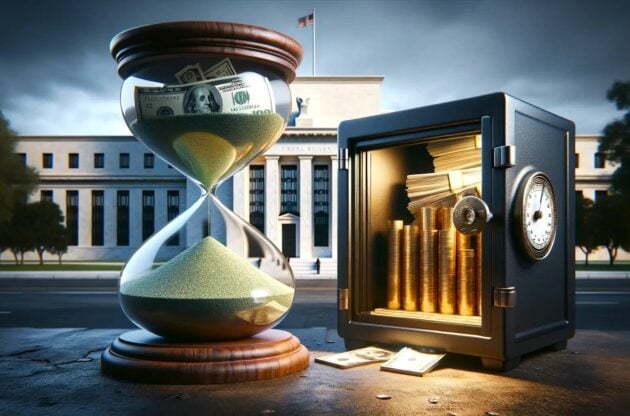After years of ultra-low interest rates, runaway money printing and reckless deficit spending, the Fed s facing a serious dilemma.
Servicing the nation’s debt is growing more and more difficult… if not impossible.
The more they borrow, print and spend to help ease the debt burden and systemic stress, the heavier the debt burden and systemic stress becomes.
And the harder it becomes to fight inflation.
Round and round it goes.
We’ve all seen and felt the ripple effects:
Fitch Ratings downgraded the US credit rating from “AAA” to “AA+” in 2023 after the administration raised the government’s debt ceiling for the 91st time.
The national debt is ballooning past $34 trillion…
The interest payments alone have skyrocketed to over $2.4 billion per DAY…
And the Congressional Budget Office says those interest payments will become the biggest bill for the federal government behind only Social Security and Medicare by 2028.
So, where will they get enough money to pay the government’s growing debt tab?
According to the Peterson Foundation, tax receipts are too low to cover the bill.
This means the Fed may have to print more money.
If they do, the nation may face even more debt and inflation.
Round and round…
During his recent 60 Minutes interview, Fed Chief Jerome Powell said, “The U.S. federal government’s on an unsustainable fiscal path.”
And the US Government Accountability Office says this “poses serious economic, national security, and social challenges if not addressed. And the longer we wait to act, the more dire the consequences will be on the economy and the public.”
Fortunately, gold is shining bright behind the scenes.
Although it’s downplayed by some financial advisors and rarely mentioned in the mainstream media…
For centuries, gold has been a store of wealth and a preserver of purchasing power for investors who understand the challenging tendencies of printed currencies.
And for gold owners, this may be old news…
But it’s worth repeating:
The US dollar was backed by gold until Nixon ended dollar convertibility to gold in 1971.
Sandra Ghizoni of the Federal Reserve Bank of Atlanta says he did it to “address the international dilemma of a looming gold run and the domestic problem of inflation.”
Maybe so.
Since then, the dollar has been backed by the faith and credit of a government in debt, the dollar’s purchasing power has tumbled more than 85%, and though the Fed’s rate hikes have slowed inflation’s growth, consumer prices are still soaring.
What does this mean for the dollar’s future?
Nobody is certain.
But governments and central banks make real decisions that affect real citizens, and…
They are “The Smartest Money.”
Central bankers have their fingers on the economic pulses of their respective nations.
And right now, they’re hoovering up and hoarding gold in record amounts.
The US dollar has historically been their main reserve currency. They know gold tends to benefit when the dollar’s purchasing power wanes. So, they’re buying as much gold as they need to hedge against lost purchasing power and growing economic uncertainty.
Remember:
Physical gold can act like insurance for your money because its price tends to rise as the dollar’s purchasing power falls.
And with so many global economic challenges converging at once right now…
It may be time to pause, reflect and ask yourself, “Are my finances prepared for what may be coming our way?”
If the answer is unclear…
Give us a call. Speak with a gold specialist and get the clarity you need to diversify with confidence.
Or call 888-529-0399 to schedule a free consultation with an experienced Gold Specialist. There’s no obligation.

